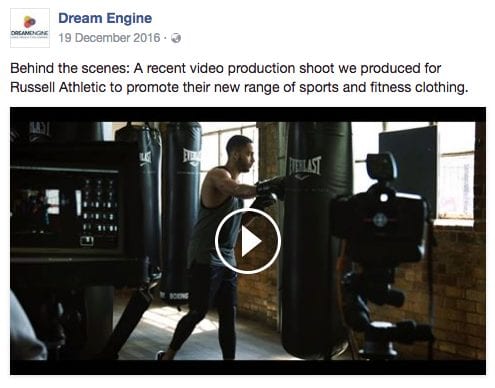Once your video masterpiece is completed, there are dozens of places you can upload it and share it with the world. However as each social media platform has different audiences and limitations, there are many ways to squeeze the most value out of each.
YouTube
YouTube is by far the biggest video sharing site online, with an enormous amount of content being uploaded every day. With this comes upsides and downsides. It has the biggest potential audience, but also the biggest potential for your video to get lost in the mass of content. So to make sure that once you have somebody watching your video, you grab their attention from the first frame.
This also extends to the thumbnail of the video (make a custom one if needed), the AutoPlay settings to cue up some of your other relevant videos.

Facebook has rapidly become a giant in video, with many people getting a large portion of their information and video content from their news feeds. Facebook’s algorithms loves it when video is uploaded natively to Facebook, and will give it more visibility than a simple link to Youtube, so if you’re releasing a corporate video it’s advisable to upload a version of your video directly to your Facebook page. But there are some issues to consider with Facebook video.
Firstly you must remember that Facebook videos play on mute unless the user chooses unmute it. So videos that are simple, have subtitles and are short will perform better on Facebook. As with YouTube, you also need to select an appropriate thumbnail that will show the viewer the main topic of the video.
So the key adjustments to make to your video for the Facebook audience is to make sure you can still get your point across without sound, make captions a priority and keep it short.

As with Facebook and Instagram, Twitter also plays videos silently unless viewers choose to unmute. Large subtitles are key to grabbing attention, as is having an option to have a video in a vertical orientation, as the majority of twitter users will be on a smartphone. Twitter videos can be up to 140 seconds long, although as is the case with all social media videos, the shorter the better, as most people won’t spend more than a minute watching a video on Twitter.
Twitter also relies on discovery by hashtags, so your video needs some appropriate hashtags to make sure people can see what your video is related to.
Instagram has always been about the visuals. Starting out as just a photo sharing app with some retro filters, Instagram’s popularity exploded and they soon branched out into video. As with Facebook, Instagram videos will Autoplay as the user scrolls down, giving you that brief seconds to capture their attention. Instagram originally had a 15 second limit to it’s video length, but this is now a minute. However, we would recommend staying closer to the original 15 second limit as shorter is usually better at keeping eyeballs on your video. Instagram is primarily a mobile app, so in your videos make sure that text is large enough to read on a smartphone screen and close-ups will work better if you are filming someone. Instagram also uses hashtags for people to discover new and trending things to look at, so if your video features a city or event, add the appropriate hashtag.
Social Media Customisation
When planning your corporate video release with social media, it’s advisable to make several versions of each video to cater to the strengths and weaknesses of each platform. Each have their own demographics as well, so the content might be tweaked slightly for each different video.
If you are looking to improve your video skills for social media, get in contact with Dream Engine today.

Ryan Spanger is one of Melbourne’s most respected and sought-after video production professionals. Ryan founded Dream Engine in 2002, and specialises in helping medium to large corporates, government departments, and the non-profit sector to connect with their audience more effectively by using video.
